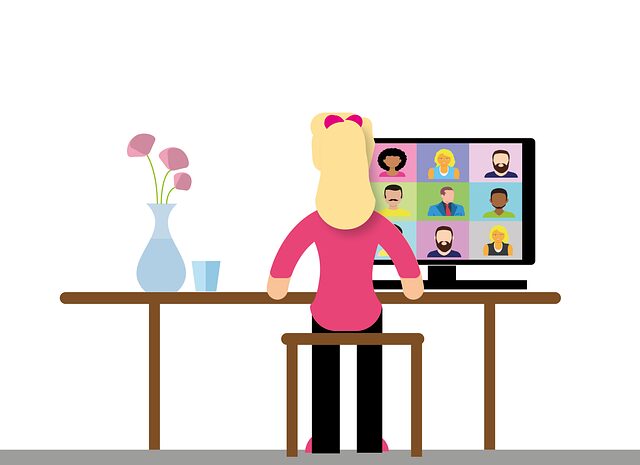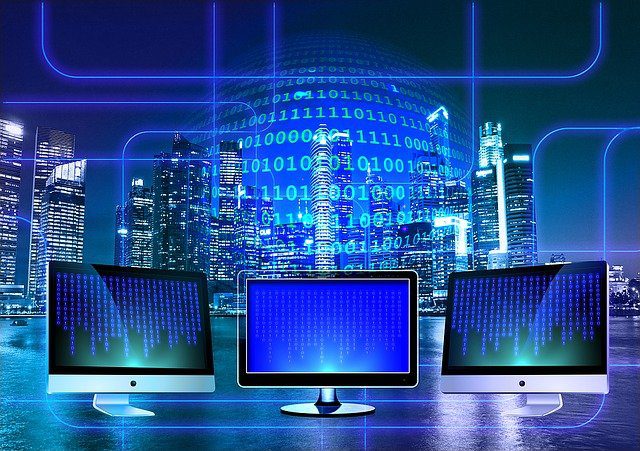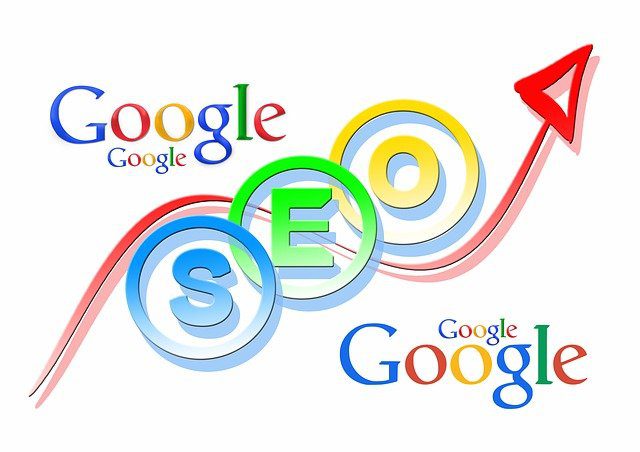How Modern Technology has Positively Changed Our Lives
With the ubiquity of technology in our lives, it’s easy to take it for granted. We rely on technology for everything from entertainment to work, and it has definitely made our lives easier in many ways. Let’s take a look at how modern technology has positively changed our lives.

Introduction: How has technology changed our lives?
A few centuries ago, there has been no such thing as a smartphone. But today, we live in a world that is dominated by smartphones. We use them to easily communicate with family & friends and share moments of good times and bad times through the internet with our loved ones. But this modern phenomenon has changed our lives in many ways. Here are some of the ways how technology has positively changed our lives.
Positive impact on science and technology
With the advancement of technology, scientists have found more and more ways to produce newer & better discoveries. In the past, finding new ways to bring nature into man-made things was difficult and time consuming.
But now that there are so many ways of producing modern technologies like smartphones, they can be made within a short period of time. And this is even being done with newer technologies every day.
Improved public safety
It has always been an issue for us as humans that we tend to be careless about our surroundings when it comes to safety issues. From cars & roads, which we take for granted as roads, not knowing that there are thousands of people who die daily because of such things is saddening, but the advancements in technology have definitely helped in removing this problem from our lives.
Today’s cars are equipped with advanced features like seatbelts and airbags to ensure your own safety when operating a car. The same goes for other vehicles like
The Internet
The first thing that comes to mind when we talk about technology is the internet. The word internet was actually coined as an acronym for “Inter-net”.
Nowadays, this term is used for a whole world of technological advancements that include email, social media like Facebook & Twitter, research tools like Google or Wikipedia, online games & gambling sites etc.
This powerful medium has obviously revolutionized people’s lives and made it easier for them to communicate with each other globally in real time from anywhere in the world at any time of the day or night through web browsers on computers or smartphones.
The internet has also helped in keeping people connected to family and friends and have linked the world together socially, economically and politically. The internet has enabled people to participate in global culture and express their opinions by joining online debates or submitting articles to online publications and journals.
The communication abilities of the internet are so far superior that they surpass all other forms of communication like film, radio or television because it is not limited by time or distance as these other media are.
Websites For example, when you search for a particular term on Google, you can see literally thousands of websites that are related to your search query even though you have typed something very specific (for example a term related to IT like “IT support” or “software testing”).
Another good example is any kind of video marketing campaign on YouTube for a product. You can upload a video about it there, just like sharing an article on Facebook except that it’s all recorded in real time.
YouTube is an amazing website that gives you every possibility to make a video for your product or service and share it with millions of people around the world. It is a very powerful tool of the internet marketing.
With the power of the internet it is easy to share your opinion and reach millions of people in just a few minutes. A simple email sent to an acquaintance, an article sent to a journalist that writes about your specific field or simply a video posted on YouTube can set you off on a higher note if you are interested in bettering yourself or your company/business.
The internet enhances communication as it allows users to quickly and easily access thousands of websites with topics that they may be interested in, many of which have their own unique style, voice and even language.
This makes it possible for someone to use these websites as news sources for almost any type of topic: sports, politics, science, entertainment and more; from the perspectives that they want. As the internet’s value continues to grow it will become more important for people who market their products or services online to learn how to effectively communicate through this means of communication.
Since the emergence of the internet, online communication has become a popular method and tool that people use to accomplish their goals. The use of registered users (about 70% of US adults aged 18+) is on the rise in social media websites such as Facebook, Twitter and YouTube with signups increasing by 11% in 2015 alone.
As communication through online platforms has grown there is a greater need for an understanding of how this type of communication can be used to your benefit as well as how to create an effective strategy for achieving your goals from this type of communication.
It is important to keep in mind that language plays a huge role in effective communication. Not only does your language affect the type and quality at which you communicate but it also affects how others react to you and your message.
The benefits of modern technology in data management
Modern technology have resulted in the development of new tools for data and information, such as the Internet. Due to this, many businesses and organizations have begun to use this type of data for decision making.
In order for a business or organization to make efficient decisions from information or data, that information must be presented in an organized manner. To allow an employee or manager to work effectively with a large amount of structured data, solutions that allow them to work with this type of data are required.
Information management is the process of structuring documents, databases and other digital media files in such a way as to increase their communication efficiency through more effective searching and retrieval (Myers, 1989).
Today many companies have begun using spreadsheets as an application tool for storing structured information; however, these tools are also used in other aspects within organizations including human resource management, financial accounting etc.
The main issue with using these tools is not knowing how to effectively manage all the different types of information stored within these applications.
Spreadsheets have many different types of data fields, including text, numbers and other types of information. As such multiple different individuals may need to use the information stored within these applications in order to gain the most value from them.
Due to the large amount of data that can be stored in a spreadsheet it is important to make sure that each user has access to it at all times.
As mentioned in the section above, spreadsheets offer users a huge amount of storage space as well as ease of use with their version 7 capabilities allowing for greater flexibility and efficiency when managing data.
With this extra functionality it is easy for new users to become lost within a spreadsheet program, resulting in increased errors and failures in work but also creating confusion around the file structure itself (Myers, 1989).
In this situation where there is an increase of error and mistakes when working with spreadsheets there are certain strategies that can be used to ensure success (Myers 1989).
By ensuring that there is a clear understanding amongst the users of the file structure and how they interact with the computer it is possible to improve performance and productivity, especially where multiple users have different levels of knowledge.
In order to help achieve this aim, there are steps that can be taken by designers in order to reduce the number of errors on a spreadsheet (Myers 1989).
One way in which this can be done is by providing frequent feedback from users regarding their progress or lack of progress. This will allow developers to build and modify spreadsheets in order to meet the needs of specific users and increase efficiency by reducing mistakes whilst doing so (Myers 1989).
In addition, having a clearly visible task list as well as easy-to-use templates for infrequently used tasks will greatly assist users with making use of spreadsheets (Myers 1989).
As one survey conducted in 1996 showed, just over 50% of the respondents always stored data on spreadsheets. In 2004 another study conducted by the Information Technology and Libraries Board in the UK, showed that almost 60% of users were storing data wrong. Based on these statistics, it is clear that more effort needs to be put in order to ensure the accuracy of data stored on spreadsheets.
Some spreadsheets can function as a database; for instance, a spreadsheet may keep track of products ordered. This might involve storing such things as customers’ names, products ordered and prices paid per item.
Such systems are sometimes referred to as “product databases” or “product order systems”, and may have requirements for security, for example for access control over specific products or user groups who can access certain parts of the system.
Such systems can easily be implemented using a spreadsheet, which offers an easy way of interconnecting many small tables and adding new records to them.
The positive effects of technology on our daily lives
Technology is central to every area of business and industry. The Information Technology industry provides a wide range of benefits to society.
In order to understand the importance of IT in today’s world, it is important to look at the way in which information technology has changed various aspects of our everyday life such as employment, trade and products that we buy and use.
In a world of technological advancements where information can easily be obtained from everywhere, there are many changes that must be made to protect information in highly technological environments.
While security is an important aspect for everyone it is even more so for businesses such as banks and human resource departments due to the fact that sensitive information such as financial data needs to be protected from unauthorized access or damage.
There are systems and programs already available on the Internet that allow consumers with cameras on their cell phones have access to bank accounts, credit card numbers or other personal information online (Harris Interactive 2010).
This issue has become more prevalent as websites and social media networks have become more popular, websites such as Facebook or MySpace that allow users to create a profile and also post pictures, personal information and status updates. This type of data is easily accessible online without requiring a password and the owner of the password is often not aware the information was compromised.
To make matters worse, these companies often do not have a way to protect this information from being stolen by malicious people who may want to use the account for identity theft or other illicit means.
Enforcing these programs that are used to protect consumer data could be difficult for some businesses as it involves monitoring employees behavior and activities on social media sites as well as enforcing policies against unauthorized access of private accounts (Harris Interactive 2010).
In addition to this, companies must consider ways in which they monitor their own employee’s activities on social media services such as Facebook following security breaches at major i.e. LinkedIn, Facebook, Twitter and MySpace (Harris Interactive 2010).
However, if these accounts were monitored and protected, as well as being aware of the security risks involved in social media use, more companies will be willing to invest in such a program and it could potentially save money for consumers.
The impact of technology on transportation
The impact of technology on transportation system is one of the most talked about topics today. Transportation system can be defined as a network in which vehicles are connected to each other to facilitate movement of people and/or goods. The advent of new technologies such as GPS and smart phones has transformed the way these networks are managed, used and operated.
Advances in technology have provided an advantage to individuals traveling long distances without being dependent on a centralized transportation system. These developments have also opened up new areas for commercial uses related to transportation systems due to the fact that there are more drivers and passengers using these systems than ever before (Bass, et al. 2007).
The number of drivers using cell phones for navigation purposes has increased by 500% since 1999, with approximately 50% of all drivers using their phones for navigation every time they drive (Bass, et al. 2007). This development has made it possible for drivers to use smartphones or cellular information services when they are driving on a regular basis or when they do not have a reliable data connection.
Commuters experience challenges when using these new systems, but various developments and improvements are certainly being made to alleviate some of their issues. For example, GPS applications such as Google Maps work by providing users with maps and directions that can be displayed on the car’s navigation system or the phone’s screen (Bass, et al. 2007).
These apps ensure that navigation is accurate and up-to-date because they have access to real-time traffic information so that user is provided with the best routes to get from point A to point B as quickly as possible.
Google also offers brief safety information for upcoming traffic incidents as well as free maps. Application developers have also created application programs for cell phone users to use while driving that include voice recognition features, which allow a driver to speak commands into their phones in order to perform functions such as finding addresses, navigating routes and using messaging services (Bass, et al. 2007).
The advancement of technology in medicine
Advancement of technology in medicine and research has also helped contribute to the efficient use of these services. For example, highly sensitive biometric devices can be implanted or used externally in order to help detect early signs of illness or injuries in order to prevent and diagnose a variety of diseases.
The development of this technology has contributed significantly to the healthcare industry by allowing medical professionals to monitor medical data in real-time. Moreover, this technology has also helped contribute to more effective treatment of certain diseases. For example, the use of such devices has allowed physicians from different clinics and hospitals to be able to monitor each other’s patients to detect early signs or changes in their condition (Keating et al. 2012).
Another instance of technology that has benefitted the healthcare industry is that it has helped increase efficiency in various aspects of the healthcare process associated with patient care, such as billing and record keeping.
Patient information is now being stored on a centralised database with multiple users having access over a network allowing for data sharing between providers or patients through mobile devices so as to increase efficiency and reduce costs associated with medical services.
The advancement of technology in education
Education standards have drastically improved since the inception of computers and other electronic equipment. Advancements in technology have made it possible for students to be exposed to higher levels of material during less time spent on class lessons, which has led to a drop in the cost of college and universities tuition.
Technology is also making it easier for students to interact with each other. Mobile devices such as iPhones, Android phones, iPads, and laptops have benefited students as they are now being used to perform various tasks in school such as taking notes using Evernote, having lectures on the go through listening to recorded speeches on YouTube or online lectures through an online learning system like Udacity.
Technology is being used in ways that are unforeseeable only by so many. It has impacted social lives significantly by allowing people to communicate with one another even when they are not present at the same place at once.
Social networking sites such as Facebook have allowed for increased networking of people based on location or even based on interests that could potentially be related to certain animals (in which someone may share a common interest). Facebook has also allowed people from a wider array of ethnicities to have an outlet where they can communicate with others and meet new people. “Google+” is a social networking tool that was launched by Google in June 2011. In August 2014, Google announced that it would shut down “Google+”.
YouTube, which is owned by Google, has been used to share educational content with others as well as promote their own. With YouTube now having an augmented reality feature similar to Snapchat, there have been many people who have shared videos of themselves dancing to songs and even lip syncing to songs when they are not using the camera function or the video function.
This has allowed for students to connect with each other on a global scale as well as interact with each other based on interests and/or location. YouTube has allowed viewers from all around the world to watch videos from people from all around the world and this has helped create a sense of connection or friendship between viewers in different parts of the world despite being thousands of miles away from each other.
Pinterest is an online website that was launched by Facebook in March 2010.
Pinterest allows users to easily share images of objects, for example clothing styles and food. Due to the popularity of the site, many people are creating their own accounts or saving images that they find in a variety of different ways.
For example, Pinterest is often referred to by people who wish to promote the fact that they have created an account on the website.
Remixing is an allusion to mixing together two different, normally unrelated things (such as a word and an image). It is part of a larger phenomenon known as Creative Commons collaboration; Wikipedia describes it as: “Taking information from one source and combining it with another source, typically on different subject matter.”
Remixing can be viewed as a sub-type of remix culture which can be applied in many places including textbooks, textbooks in e-textbooks, educational software and textbook authorship (i.e., academic writing). The term was coined by Canadian professor John Fullerton who has studied remix culture and children’s media literacy.
At the time of its creation, Pinterest was a functional website that allowed people to save pictures and blog about them in a stream similar to blogs. The functionality was developed by wedding photographers, and focused on organizing images taken during each wedding for other photographers to see.
It is reported that most Pinterest users are women between the ages of 21 and 41 with an average income of $79,000 in 2009, who have a Bachelor’s degree or higher (Source: 2010 census), thus creating contention as to whether or not it is truly “used by women”. According to Mashable, “The power users are mostly women under the age of 30 — possibly including boardroom executives like Sheryl Sandberg, who came up with the idea for the site back in 2007 — along with a few men over 40.” (Source: 2010 census).
Advantages and Disadvantages of Modern Technology in Agriculture
Many advantages have been gained from using technology in agriculture, for example transportation and communications. As farmers have become more knowledgeable about new technology applications, they have been able to improve their production and management. The need for farmers to talk to each other has lessened as a result of technology because of the increase in use of electronic systems.
Spreading news through radio or television has also decreased the time it takes for word of an emergency to reach farmers. This is advantageous because the farmers can be more prepared if an emergency does arise (Flock & Knepper 1981).
With the use of satellites many farmers are now able to gather important information from other places around the world like weather forecasts, estimates on prices and plenty of other useful facts that may affect farming operations.
Since there has been a great deal of advancement in wireless communication systems, it is much easier for people in remote areas like farmers to figure out where they are located and where services are available (Flock & Knepper 1981).
The use of GPS (global positioning system) has been very helpful as it can be used to determine where a farmer is located in the world. This is important because if farmers are not where they should be it could lead to their death or may cause things such as crop failure.
There are different styles of cell phones available today that can come in handy for farmers to make sure everything is going well on the farm. The range on these phones are considerable but this does not put a strain on the farmers or ruin their day. Also, with some of these phones, there is a way for people to get a hold of any farmer that may be out in the field and away from other resources and people who can help them.
The use of electronic mail systems and electronic mail account enable farmers to have immediate access to information that they need while out at the farm. Having the ability to check email while on the farm helps keep everything running smoothly so there will not be an issue with crops being failing or the loss of a farmer.
There are different types of GPS systems that farmers may be using today to be able to access information while they are on the farm. This technology can be very helpful when it comes to looking at maps and knowing exactly where farmers are.
Farmers use this type of technology because there are so many things that farmers need to know about; for example, about irrigation where the crops may be growing and other places in their farm that need attention. Also, farmers use these systems so they can figure out what parts of their farm they have not been able to see due to being in a very rural area and being out in the fields too long.
Conclusion
How has technology positively changed our lives? In many ways, technology has made our lives easier. We rely on technology for everything from entertainment to work. Here is a look at how technology has changed our lives and made them easier in so many ways.









